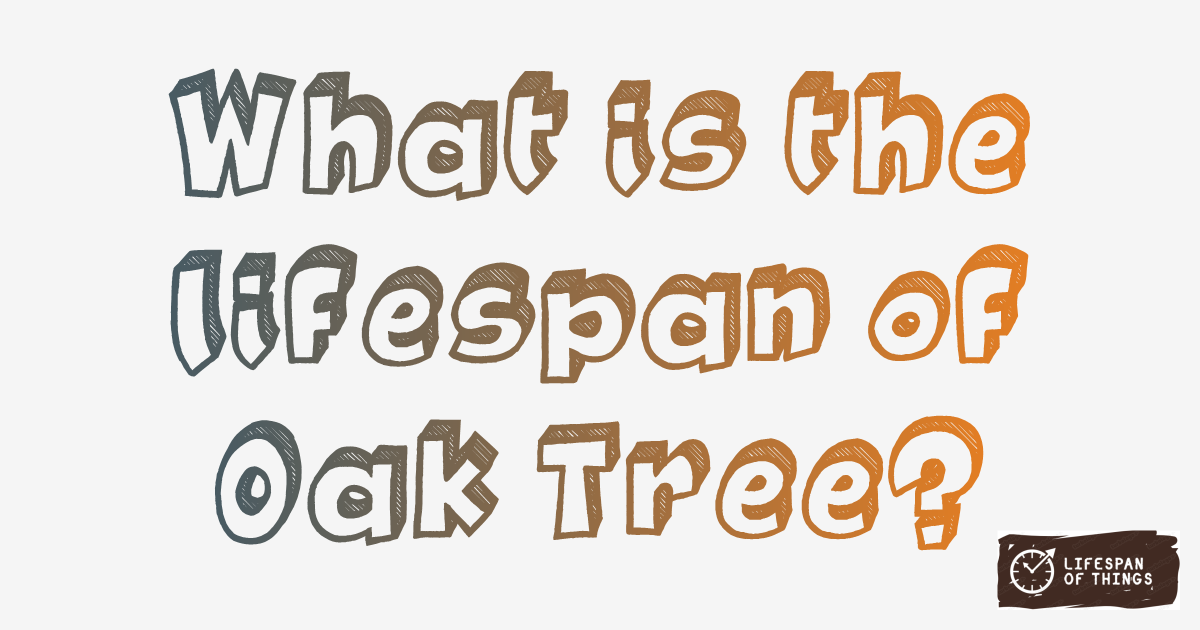
100 - 300 Years
Lifespan of Oak Tree is 100 - 300 Years. Oak trees are known for their incredible longevity and resilience. They thrive in temperate climates and are highly valued for their strength and durability. Regular care, such as pruning and monitoring soil conditions, can ensure their health and longevity.
Useful Information
Oak trees thrive in temperate regions with well-drained soil. They require plenty of sunlight and moderate rainfall to grow healthily. Seedlings need protection from grazing animals and harsh weather in their early stages. Mature oaks develop extensive root systems that stabilize soil and prevent erosion. They are often found in forests, parks, and large gardens where they have ample space to grow.
Learn about the specific habitat requirements of deciduous trees, including soil type and sunlight exposure.
Oak trees play a vital role in supporting biodiversity, providing habitat for countless species of birds, insects, and mammals. Their leaves and branches absorb carbon dioxide and release oxygen, improving air quality. Oaks also stabilize soil and reduce erosion through their extensive root systems. Fallen leaves enrich the soil, supporting the growth of other plants. Mature oaks contribute to the ecosystem for centuries, making them environmental powerhouses.
Oak wood is highly valued for its strength and durability, commonly used in furniture, flooring, and construction. The tree’s acorns have historically been used as a food source for both humans and wildlife. Tannins extracted from oak bark are used in leather production. Oak barrels are a staple in winemaking and whiskey aging, imparting unique flavors. Its ornamental appeal makes it a popular choice for landscaping large areas.
Conservation efforts focus on protecting oak forests from deforestation and disease. Initiatives include reforestation projects, monitoring pests like oak wilt, and promoting sustainable forestry practices. Community-driven efforts, such as planting acorns and saplings, help restore oak populations. Preserving ancient oaks ensures their cultural and ecological legacy. Conservation organizations collaborate globally to protect diverse oak species from habitat loss.
The Major Oak in Sherwood Forest, England, is a legendary tree linked to Robin Hood folklore. California’s Angel Oak is estimated to be over 400 years old and attracts thousands of visitors annually. The Tree of Life in Bahrain survives in the desert without a visible water source, showcasing remarkable resilience. These iconic examples highlight the cultural and ecological importance of oaks.
Lifespan Comparisons
| Compared Item | Comparison Description |
|---|---|
| Lifespan of Maple Tree | The Oak Tree and the Maple Tree have similar lifespans, lasting around 100-300 years each. |
| Lifespan of Birch Tree | The Birch Tree and the Oak Tree share a lifespan of roughly 100-300 years, thriving in nature for decades. |
| Lifespan of Willow Tree | With a lifespan of approximately 100-300 years, the Willow Tree stands tall alongside the Oak Tree in longevity. |
| Lifespan of Aspen Tree | While the Oak Tree can live 50-200 years longer than the Aspen Tree, both trees contribute to the beauty of nature in their own ways. |
| Lifespan of Dutch Tulip | The Oak Tree outlasts the Dutch Tulip by several decades, making it a long-standing symbol of strength and endurance in nature. |
| Lifespan of Parrot Tulip | Compared to the Oak Tree, the Parrot Tulip has a significantly shorter lifespan, brightening gardens briefly with its vibrant colors. |
| Lifespan of Triumph Tulip | Similar to the Dutch Tulip, the Triumph Tulip has a relatively short lifespan compared to the majestic Oak Tree, blooming brightly for a brief period. |
| Lifespan of Fosteriana Tulip | The Fosteriana Tulip, like the Parrot Tulip, has a shorter lifespan than the Oak Tree, adding beauty to gardens for a limited time. |
| Lifespan of Hemp | Hemp has a moderate lifespan when compared to the Oak Tree, serving various purposes over its 10-15 years of growth. |
| Lifespan of Polyester | Polyester, with a lifespan of 5-15 years, has a shorter endurance compared to the Oak Tree, used in a variety of fabrics and products. |
| Lifespan of Nylon | Nylon, lasting around 5-15 years, falls short in lifespan compared to the Oak Tree, commonly used in textiles and other applications. |
| Lifespan of Acrylic | The Acrylic material boasts an impressive lifespan ranging from 100-1000 years, contrasting with the Oak Tree's natural lifecycle. |
| Lifespan of Spandex (Elastane) | Spandex (Elastane) is known for its elasticity but has a shorter lifespan of 5-15 years compared to the long-lasting Oak Tree. |
| Lifespan of Rayon | Rayon, lasting approximately 5-15 years, has a lifespan that pales in comparison to the enduring Oak Tree, used in textiles and fashion. |
| Lifespan of Poly-Cotton Blend | The Poly-Cotton Blend, with a lifespan around 5-15 years, offers a mix of durability similar to the Oak Tree in the realm of fabrics and textiles. |
Frequently Asked Questions
Lifespan of Oak Tree is 100 - 300 Years.
Oak trees support biodiversity, improve air quality, stabilize soil, and enrich the ecosystem.
Oak trees thrive in temperate regions with well-drained soil, ample sunlight, and moderate rainfall.
Oak wood is valued for its strength and durability, commonly used in furniture, flooring, construction, and in winemaking barrels.
You can support Oak tree conservation by participating in reforestation projects, monitoring pests, and promoting sustainable forestry practices.
Yes, Oak trees are popular choices for landscaping large areas due to their ornamental appeal and longevity.
Yes, iconic examples include the Major Oak in Sherwood Forest, Angel Oak in California, and the Tree of Life in Bahrain.








